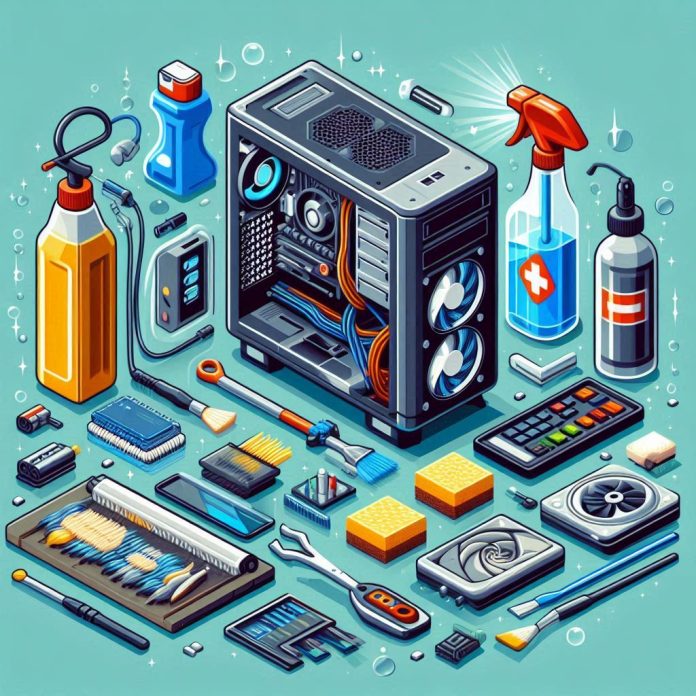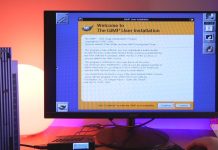As someone who has spent countless hours on a desktop PC, I can attest to the importance of regular maintenance. Much like any other machine, your computer requires care to ensure it runs smoothly and efficiently. In this guide, I will walk you through essential desktop PC maintenance tips that can prolong its lifespan and enhance performance. Whether you’re a seasoned writer or a tech novice, these strategies are straightforward and effective.
Why Desktop PC Maintenance Matters
Regular maintenance not only extends the life of your desktop PC but also prevents frustrating slowdowns and unexpected crashes. By investing a bit of time in upkeep, I can ensure my computer remains a reliable tool for my work. Here are a few reasons why maintenance is crucial:
- Performance Optimization: A well-maintained PC runs faster and more efficiently.
- Cost Savings: Regular checks can prevent costly repairs or the need for a new machine.
- Data Protection: Preventing hardware failures can safeguard important files and information.
Basic Maintenance Tasks
1. Clean Your Workspace
While it may seem superficial, a clean workspace can greatly impact your desktop PC’s performance. Dust and debris can accumulate on and around your computer, which may lead to overheating and hardware damage.
- Tip: Use a microfiber cloth to wipe down the surfaces and a can of compressed air to blow dust out of vents and keyboards.
2. Organize Cables
Tangled or cluttered cables can obstruct airflow and create a disorganized work environment. Take a moment to organize your cables using clip ties or cable organizers.
- Tip: Label cables to keep track of which belongs to which device.
Software Maintenance
3. Update Your Operating System and Software
Keeping your operating system and software up-to-date is critical for security and performance. Updates often include patches that fix bugs and improve functionality.
- How-To: Check for updates regularly by navigating to the settings in your operating system or software applications.
4. Run Antivirus and Anti-Malware Scans
Malware can severely impact your PC’s performance and compromise your data. To combat this, I run antivirus and anti-malware scans regularly.
- Tip: Schedule automatic scans to ensure consistent protection without having to remember to do it manually.
5. Uninstall Unused Programs
Over time, I accumulate programs that I no longer use. These can take up valuable space and resources. Regularly reviewing and uninstalling unnecessary software can free up space and enhance performance.
- How-To: Go to the control panel (Windows) or applications folder (Mac) to manage installed software.
Hardware Maintenance
6. Clean the Interior of Your PC
Dust can accumulate inside your PC, especially around fans and components. Cleaning the interior can help with airflow and cooling.
- How-To: Power down your PC, unplug it, and carefully open the case. Use compressed air to blow out dust, focusing on fans and heat sinks.
7. Check Hard Drive Health
A failing hard drive can lead to data loss and system crashes. I regularly check the health of my hard drive using built-in tools or third-party software.
- Tools: Use tools like CrystalDiskInfo or the built-in Windows CHKDSK utility.
8. Monitor Temperatures
Monitoring the temperature of your components can help prevent overheating. I use software tools like HWMonitor to keep an eye on my CPU and GPU temperatures.
- Tip: If temperatures are consistently high, consider adding or upgrading cooling solutions.
Performance Enhancements
9. Defragment Your Hard Drive
If you are using an HDD (hard disk drive), defragmenting can help improve performance. Defragmentation reorganizes data on the disk, making it easier for the system to access files.
- How-To: Windows has a built-in defragmentation tool accessible through the search bar.
10. Upgrade Hardware Components
If your PC is still sluggish after performing maintenance, consider upgrading hardware components. Adding more RAM or switching to an SSD (solid-state drive) can significantly boost performance.
- Tip: Research compatibility before purchasing components.
Backing Up Your Data
11. Regular Backups
Backing up your data is one of the most critical aspects of maintenance. I use both cloud storage and external hard drives to ensure my data is secure.
- Tools: Consider using services like Google Drive, Dropbox, or external drives for backups.
12. Create a Backup Schedule
Establishing a routine for backups can help ensure that you never lose important files. I recommend creating a monthly or weekly schedule depending on your needs.
- Tip: Use backup software that automates the process.
Conclusion
Desktop PC maintenance may seem daunting, but it can be easily integrated into your routine. By following these guidelines, I can ensure that my desktop PC remains a reliable tool, ready for any writing project or task that comes my way. Remember, a little effort goes a long way in preventing larger issues down the line.
<iframe width="560" height="315" src="https://www.youtube.com/embed/ey6cztHJZdM?si=-2z1iluTtvmvIRxX" title="YouTube video player" frameborder="0" allow="accelerometer; autoplay; clipboard-write; encrypted-media; gyroscope; picture-in-picture; web-share" referrerpolicy="strict-origin-when-cross-origin" allowfullscreen></iframe>




.jpg?w=100&resize=100,70&ssl=1)

Keeping it clean is keeping it real (real long, forever).